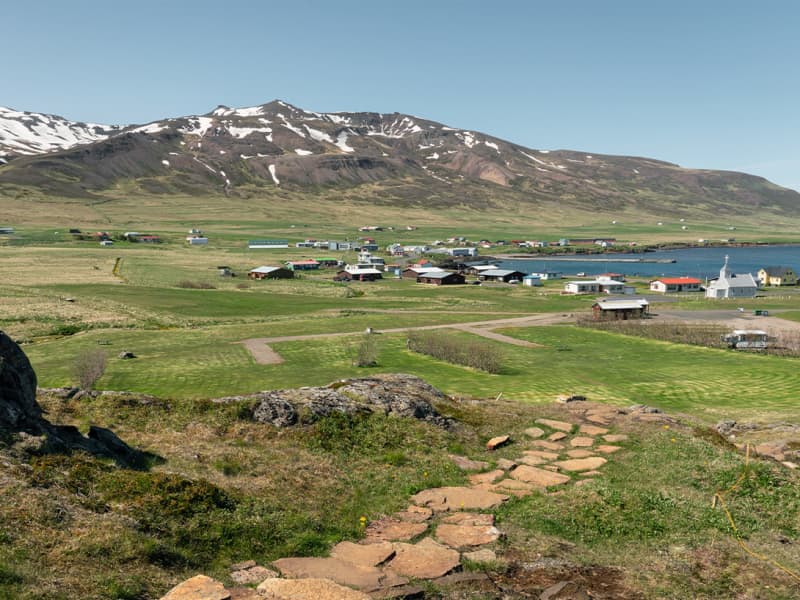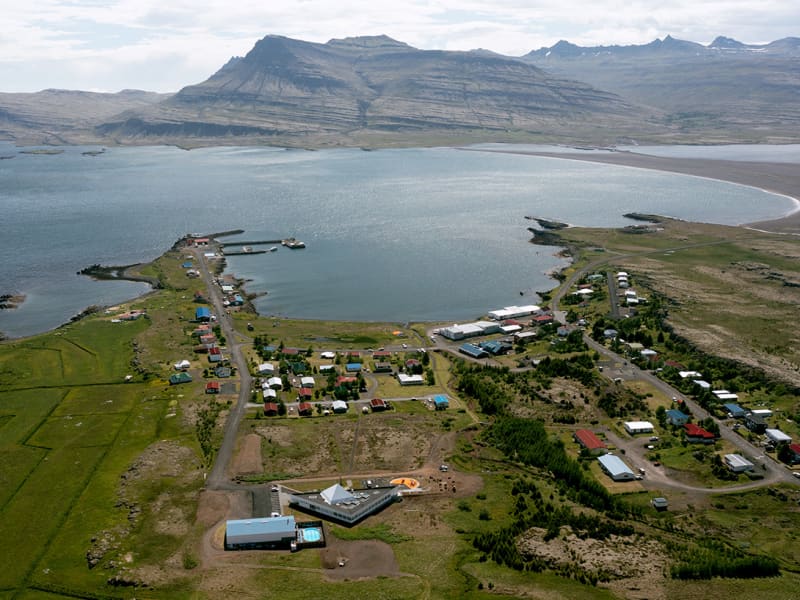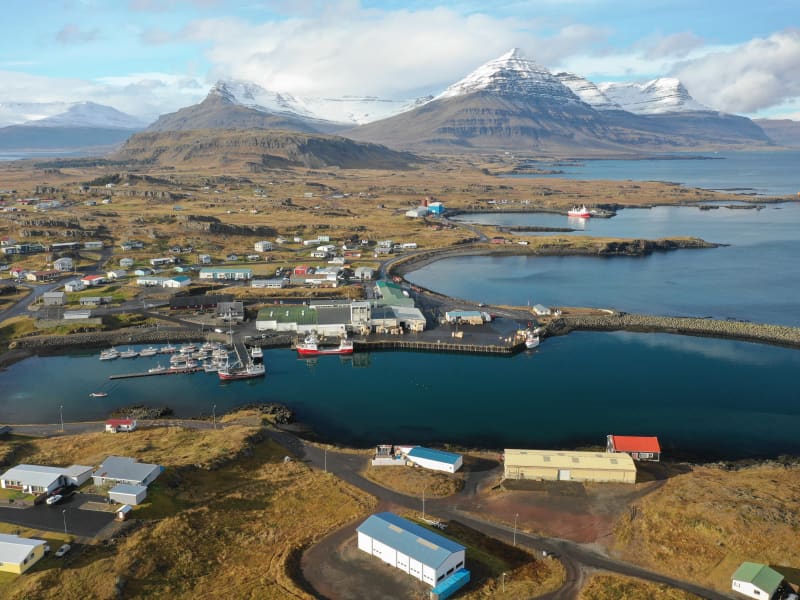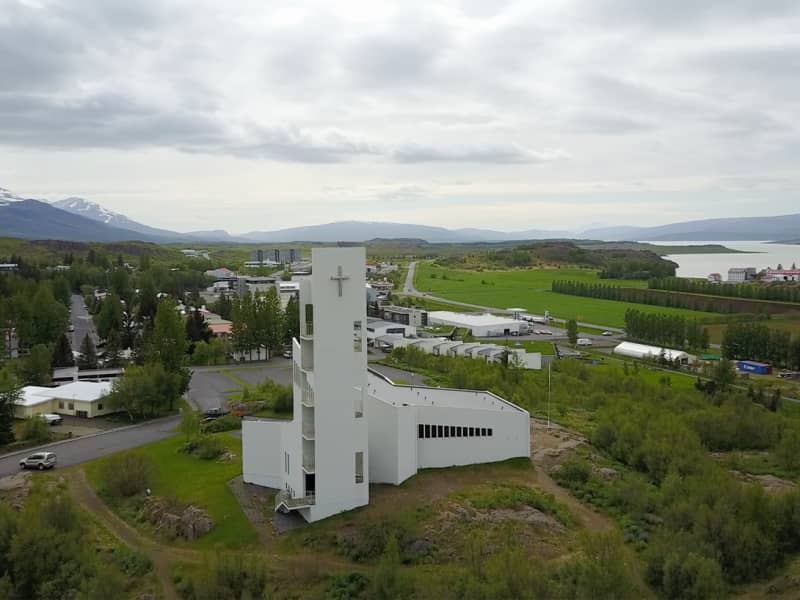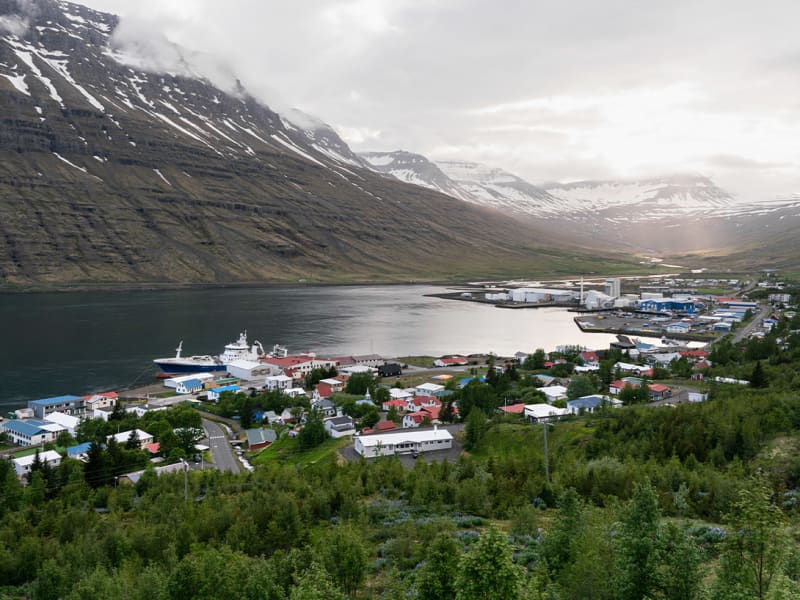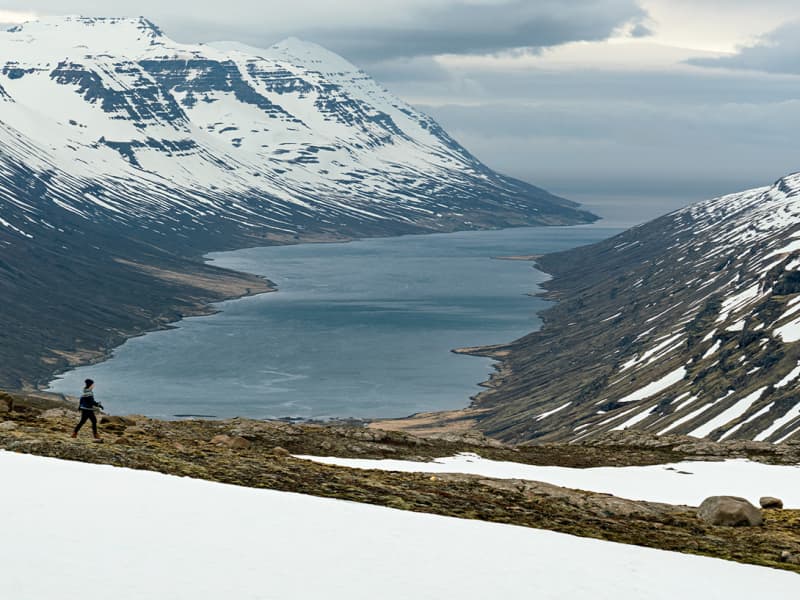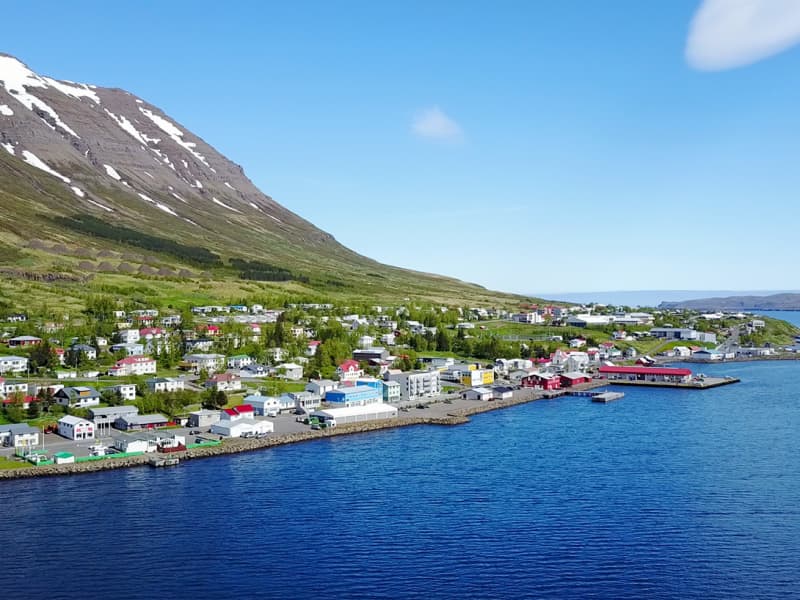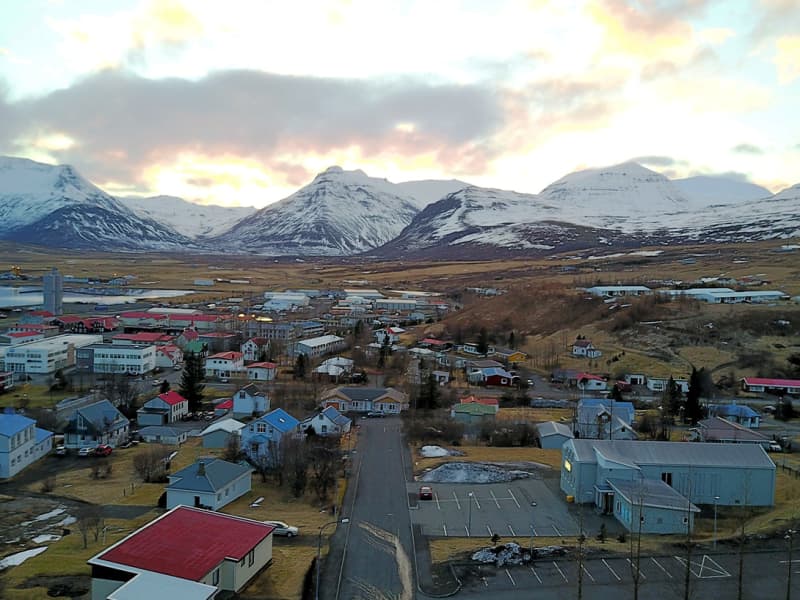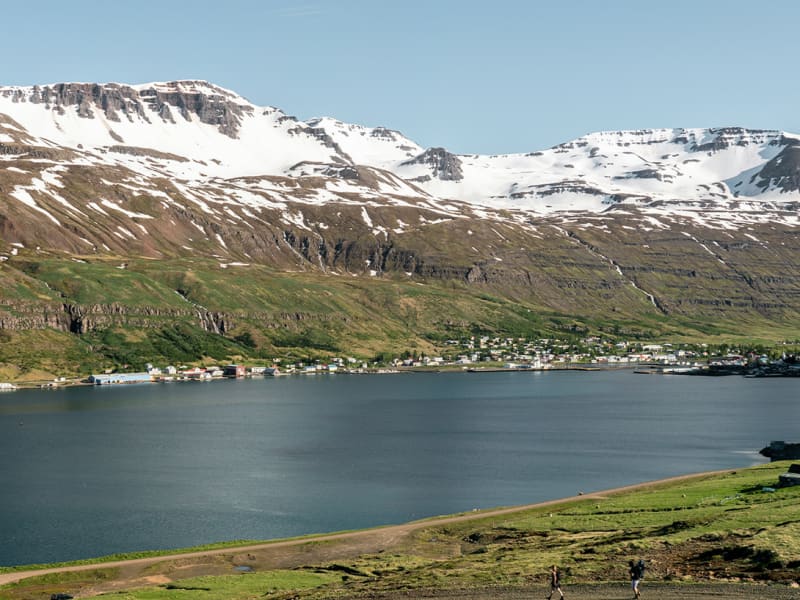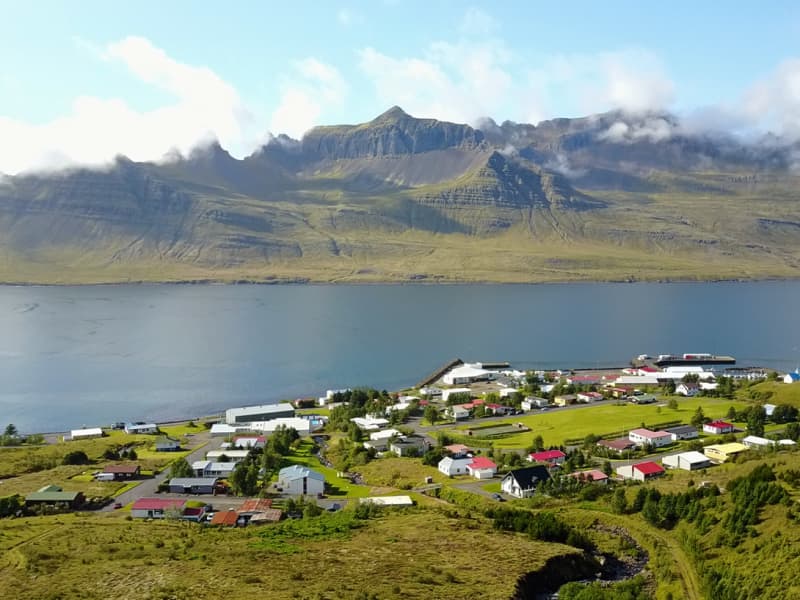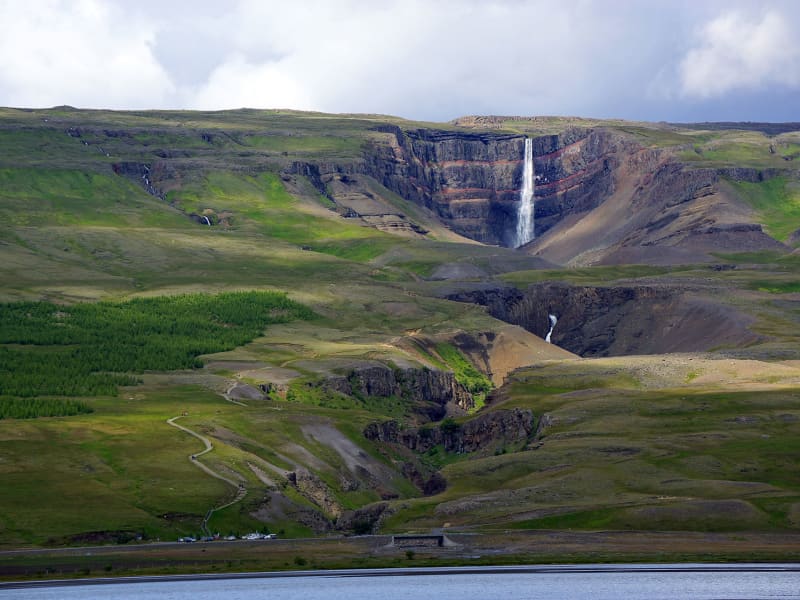Borgarfjörður eystri
You’re in good company in this beautiful region: around 100 friendly locals populate the village, tourists pass through to enjoy the surrounds (including first-rate hiking trails), Icelanders make an annual pilgrimage for a great summer music festival, birdlife pays a visit for a few months each year, and even royal elves call the area home. True! You can visit the central hill known as Álfaborg – the name translates as the ‘Elves’ Castle’, and the queen of the Icelandic elves allegedly resides here with her court.
The 70km drive from Egilsstaðir to Borgarfjörður winds through some exceptional viewing points, over and around the mountains, until it reaches the small bubble of civilization. Follow the road through town and after about 5km you’ll reach a small fishing harbor. Here, at Hafnarhólmi, is some of the best bird-watching in the country, including easy close-up viewing of puffins and kittiwakes.
Yes, the birds are a big drawcard, but Borgarfjörður has also become renowned for its excellent hiking trails known as ‘Víknaslóðir’, which traverse colorful rhyolite mountains and lead to deserted fjords and coves on the way to Seyðisfjörður. Other trails take hikers into the dramatic Dyrfjöll mountain range. Locals have marked numerous trails that cater to most skill levels and range from an hour to a full day, and compiled a detailed map. They’re ready to help you explore.
Highlights:
Walk: to the giant boulders and grassy meadows of Stórurð. But you’ll find near-endless options here for walking and hiking.
Taste: local fish in one of the town cafes. Fish soup is a Borgarfjörður favorite!
Soak: at the local spa, where outdoor hot tubs have the added appeal of fine mountain views.
Road-trip: around the bay to reach Hafnarhólmi and its bountiful birdlife.
View

